**
It's not working too good,
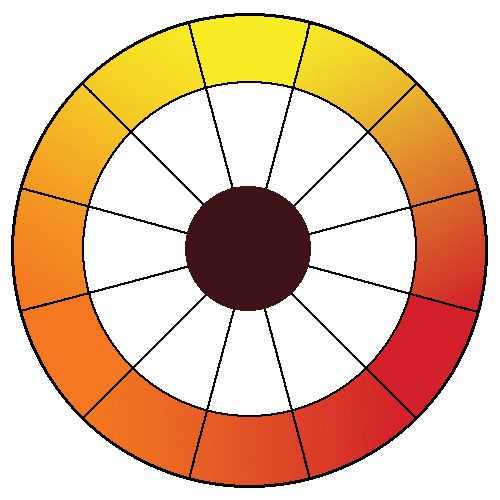
I only put one brown in the center, it could be divided into a different color brown for each section. I think the wheel is odd because of the three 90 degree sections being yellow, orange and red.
Here it is with both browns sharing the one brown block, You can hardly tell the difference in RGB even tough the colors were made in CMYK.
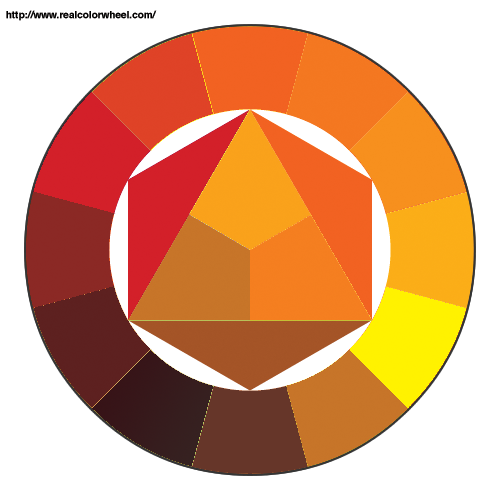
Don
**
Hi Don, its a beautiful wheel, however, I am under the impression that a different brown is produced from red, yellow, and orange. Can a color wheel, or 3 separate wheels convey that concept?
Deborah
**
Maybe this second style would be better. But as you can see there is not much difference between the browns, and as the color gets darker there is even less noticeable difference. I think the first one is best.
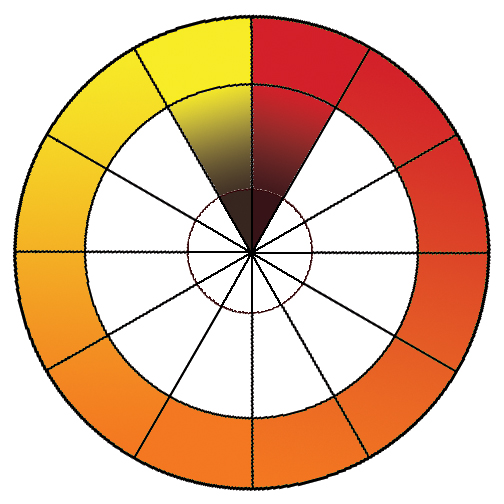
**
> Hi Don,
> Yes, I agree, the darker the brown, the less noticable the differences are between them.
> But, I do love this wheel that you sent, and I wonder what it would look like completed... (Compementary browns?)...
They wouldn't be called complementary browns, they would be analogous browns. Don
> Is that even a possibility, because of the similar inherent light waves of the warm hues?
Wavelengths are measured in nanometers or angstrom units. What you meant to say is inherent light frequencies. What you should really have said is, the similar values. I agree they are hard to tell apart but I could do it. Don
I am going to put this whole letter in my color forum. Did I invite you to join it yet?
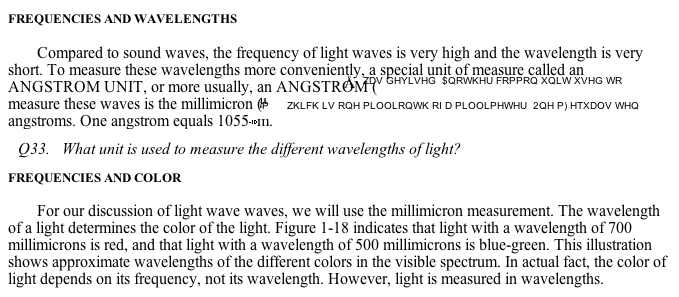
Don
>
> Perhaps the differences in the browns are slight, seeing only a small portion. How great, if at all, would the differences in the browns be if they were opposite each othe on the "Warm to Brown" wheel?
It's the Red-Orange-Yellow to Brown Real Color Wheel. warm would include from yellow-green to magenta. Magenta doesn't darken through brown, it goes straight to neutral dark. Don
**
Hi Don,
Would analogous browns be considered.... (Now I'm going to laugh) "Analogous complementaries", if they were set on a wheel and therefore, browns would be opposite each other? (As, for example the gray scale on a wheel... We can clearly see the grays opposite each other. "complementary grays".
No, I didnt know about your color forum, I would love to be a part of it! Thank you!
**
Hi Don,
It wasnt until I already sent that last e-mail that I saw the attachment of your completed "Red, orange, yellow, brown to Real color wheel"
Why are all of the browns so similar?
**
I told you they would be. The computer which works in Red, yellow and blue primaries doesn't make a big distinction between burnt umber and raw umber, told ya told told ya.
That why I like the original one I sent you. Din
**
Hi Don,
The master of color! Thanks for following through on my quest to understand, so I could see you were correct, of course!
Thank you for all the time & effort.
Another question...Can you tell me why or how iron (red) makes it complementary color of green in nature?
Also, I read that on your wheel, the subtractive & additive colors are joined. Can you explain this?
THANK YOU SO MUCH FOR EVERYTHING!!! Deborah....
(Now I'm off to teach my color class!)
**
Red and green are not complementary to start with. Opposites are 180 degrees apart, red and green are 120 degrees apart. The opposite of red is cyan, green's opposite is magenta.
Iron is one of several elements capable of making a rainbow of all colors in crystals.
Iron Fe 26 7.86 Malleable metallic, silver colored element. A full spectrum element.
QUARTZ, IRON, rose quartz is a light magenta. Citrine is from yellow to orange, centering dark, through brown. Iron also gives black [deep-red] to onyx, and red and orange in fire agate.
SPHALERITE, IRON, Idiochromatic colors from, yellow, tan, brown, black, orange and red. High dispersion showing the spectrum like a diamond.
SIDERITE, IRON, yellow-green to brown, centering colors in different crystals, transparent or translucent. This crystal is the cool side of the Yellow scale to neutral dark.
CORUNDUM, IRON, makes crystals in blue, cyan, dark-green, yellow, orange, red and magenta. All transparent, all brittle, and all expensive as crushed pigments. Iron makes all three primary colors in this crystal Corundum, [A1203], plus making the secondary colors Red, Ult. Blue and Green. The Red and Green have added Chromium.
Here is a web page of colored elements.
http://www.realcolorwheel.com/crystals.htm> Also, I read that on your wheel, the subtractive & additive colors are joined. Can you explain this?
The primary colors of light are equally spaced between the primaries of pigment. Both systems mesh and are joined perfectly.
I hope you have all your complements correct. Don't go teaching the red-yellow-blue colorwheel and mess everything up!
Just as a test, on a correct 12 color wheel, what are the complement colors? In other words, which colors mix to a neutral dark? Don
**
Hi Don,
Please go easy on me, I'm looking at your tiny wheel! (I need to get 2 more of your large wheels. One is at the school,
I need one for home and the new school location.Send me your address, and I'll send you a check, I need them A.S.A.P,
Please tell me cost...) but in the meantime, here are my answers... Did I understand correctly? Deborah
1 & 19 complementary
7 & 26 "
10 & 29 "
13 & 32 "
16 & 35 "
22 & 4
**
Yes, you understood the question but didn't match up the pigment color and numbers from the back.
Would you rather have the 5" ($10), 8" ($20), 11 ($30)", or 24" ($75) canvas ($50) paper (which I have ready to print but haven't yet.) Soon I should get the paper needed delivered so I can roll either the canvas or paper in a tube and mail, all the way up to 32" for schools. Then I'm going to get pull down displays so they can be rolled up and left it the classroom. As a teacher take 20% off what ever you want.
1 & 19 complementary, Yes, That would be Yellow and blue, using the dark yellow which is brown to mix with ult. blue to make neutral dark.
7 & 26 complementary, Red (cad red) and cyan (Thalo Blue)
10 & 29 complementary, No, that would be 10 Scarler (no tube color made yet) and 28 turquoise blue-green.
13 & 32 complementary, No, it would be 13 & 31. 13 being magenta (quinacradone magenta PR122)and 31 being green (Thalo green yellow side)
16 & 35 complementary, Yes, that would be Purple and Yellow-green (yellow-green as different from Yellow-yellow-green and yellow-yellow-yellow-green)
22 & 4 complementary, Yes, Cobalt blue and orange, because both pigments are opaque and orange has opaque yellow in it, the neutral is dark gray, not black.
I see you are having trouble reading across the wheel. Perhaps I should put the complement numbers on the front of the wheel, or make the color number the opposite color.
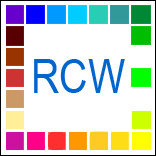
 Home
Home

 Help
Help

 Search
Search

 Login
Login

 Register
Register

 Broadcast Message to Admin(s)
Broadcast Message to Admin(s)

 « Home
« Home  ‹ Board
‹ Board  Top of this page
Top of this page 
 Pages: 1
Pages: 1

